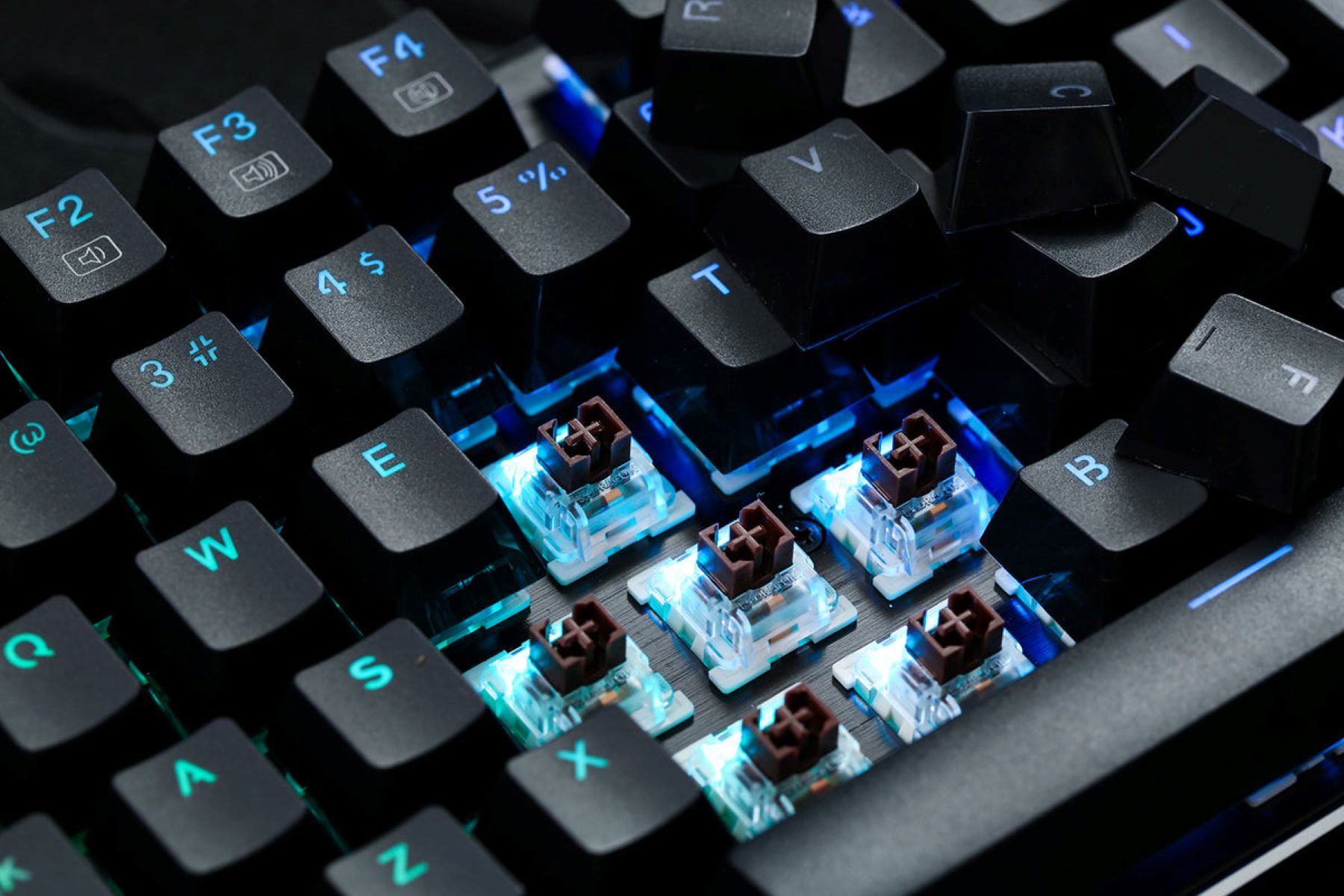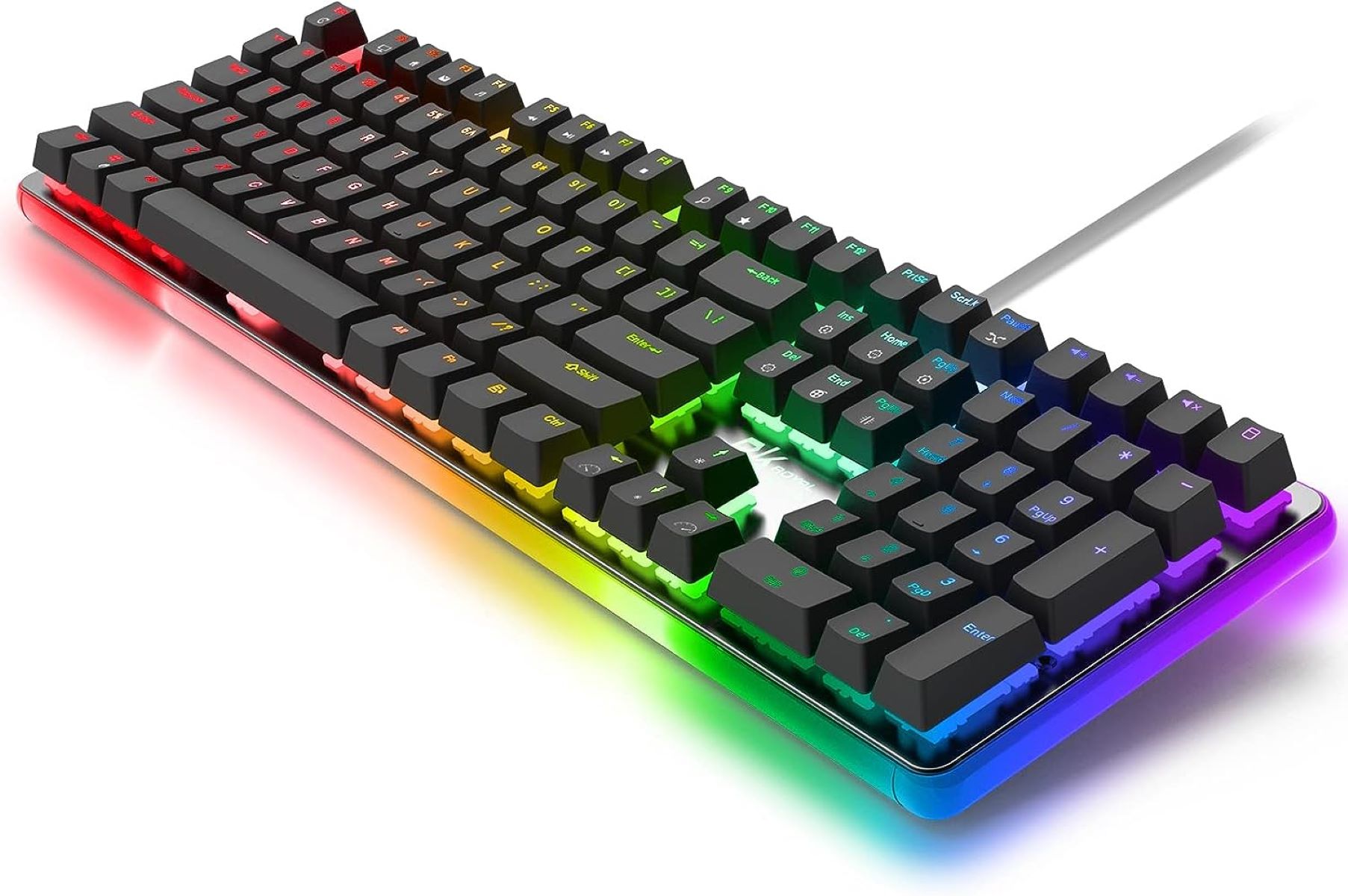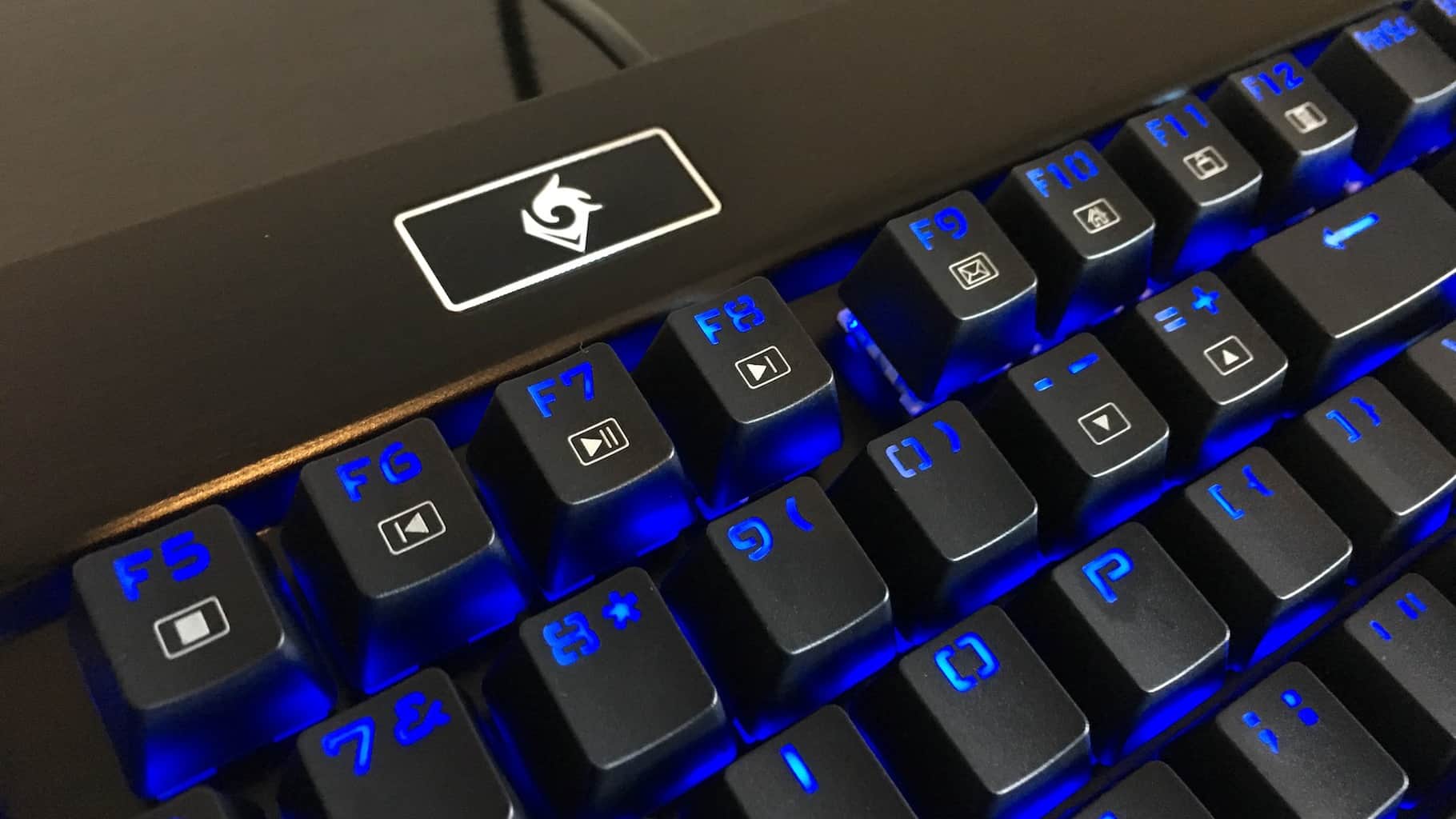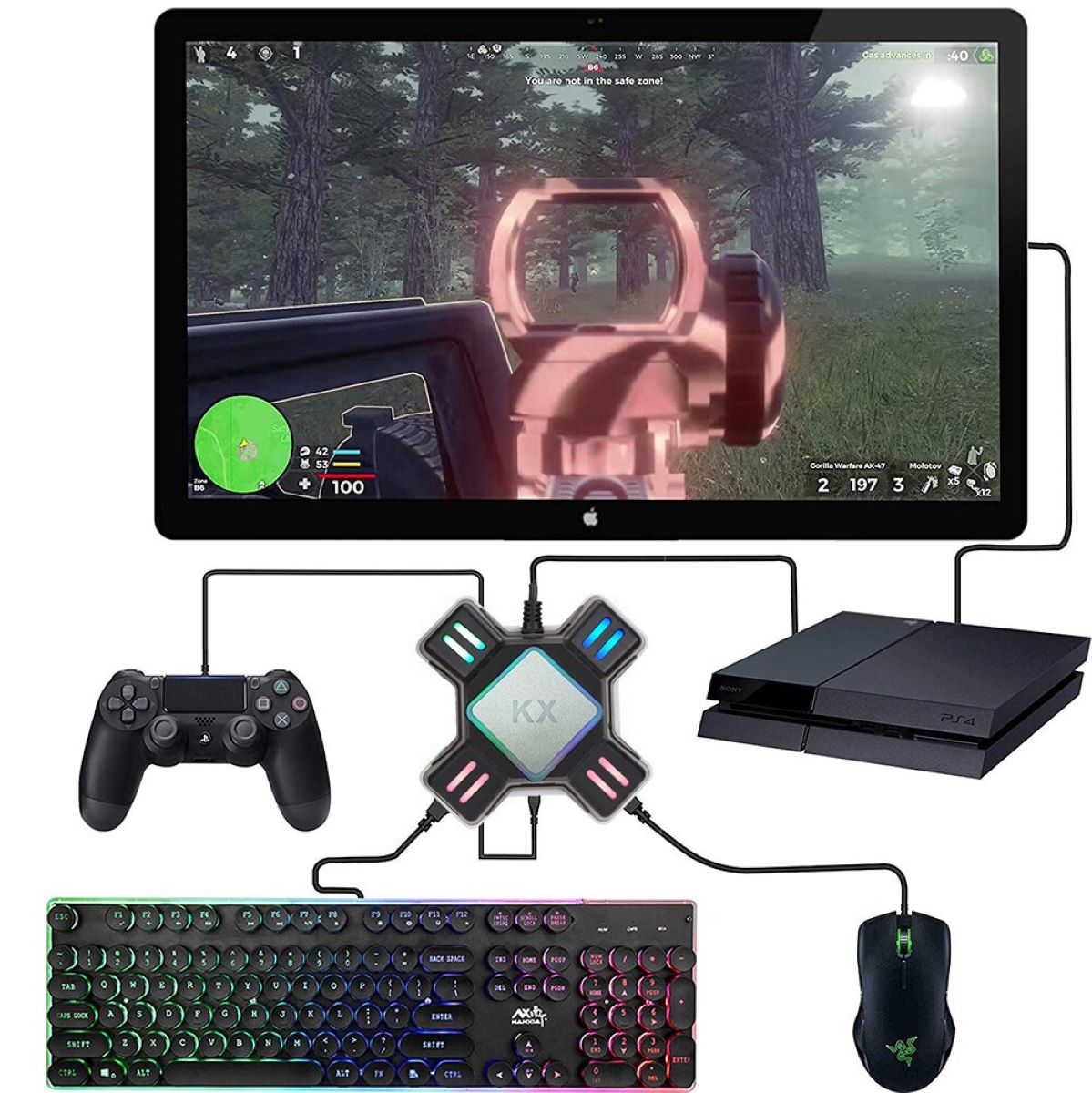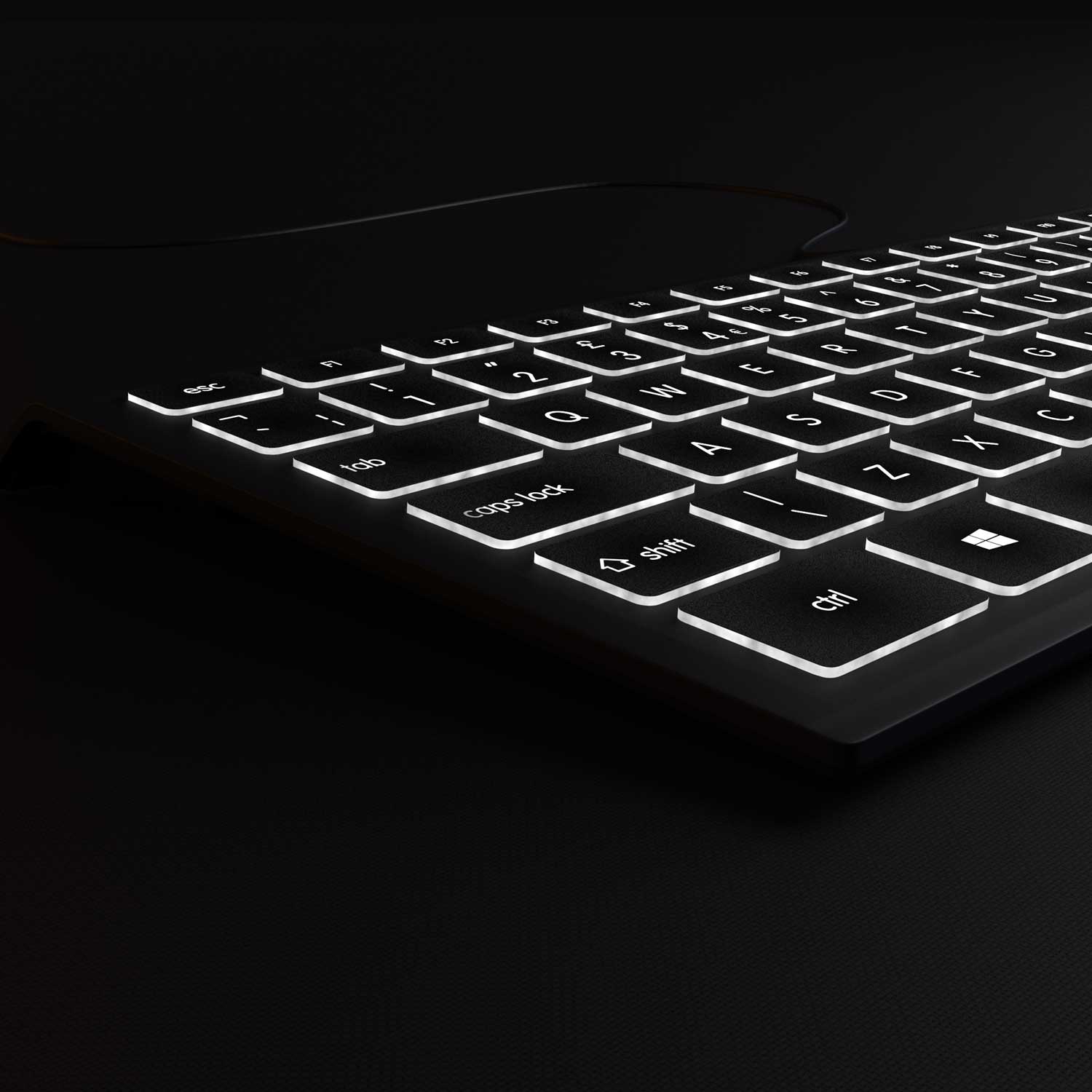Introduction
Gaming keyboards have evolved beyond mere typing tools, incorporating customizable RGB lighting to enhance the gaming experience. The ability to change the keyboard color adds a dynamic visual dimension to gaming setups, reflecting the user's style and creating an immersive atmosphere. This feature has become a defining characteristic of modern gaming keyboards, allowing users to personalize their gaming stations to match their mood, game theme, or aesthetic preferences.
The RGB lighting on gaming keyboards is not just for show; it can also serve as a functional tool. For instance, it can be programmed to indicate in-game events, display notifications, or act as a visual equalizer that responds to the audio output from the game. This fusion of aesthetics and functionality has made RGB lighting a popular choice among gaming enthusiasts and professionals.
Understanding how to change the keyboard color is crucial for harnessing the full potential of a wired gaming keyboard. Whether it's to match the theme of a game, create a personalized gaming ambiance, or simply add a touch of flair to the gaming setup, knowing how to customize the keyboard's color profile is a valuable skill for any gamer. In this guide, we will explore the intricacies of RGB lighting and provide step-by-step instructions on how to change the color of a wired gaming keyboard. Let's delve into the world of vibrant RGB illumination and unlock the potential for personalized gaming experiences.
Understanding RGB Lighting
RGB lighting, short for red, green, and blue lighting, is a versatile technology that enables users to create a spectrum of colors by adjusting the intensity of each primary color. In the context of gaming keyboards, RGB lighting allows for a virtually unlimited range of color customization, providing a visually stunning and immersive experience. By understanding the fundamentals of RGB lighting, users can harness its potential to transform their gaming environment.
At the core of RGB lighting is the ability to mix different intensities of red, green, and blue light to produce a wide array of colors. This is achieved through the use of individual light-emitting diodes (LEDs) for each key on the keyboard, allowing for precise control over the color and brightness of each key. Additionally, advanced gaming keyboards often come equipped with software that enables users to create custom lighting effects, synchronize lighting with in-game events, and even link the lighting to other compatible peripherals for a cohesive visual experience.
RGB lighting also serves practical purposes beyond aesthetics. For instance, it can be used to assign different colors to specific key zones for quick visual identification during gameplay. This can aid in creating visual cues for in-game actions or highlighting important keys for specific game controls. Furthermore, the ability to synchronize lighting effects with in-game events enhances immersion and provides valuable visual feedback during gameplay.
Understanding the intricacies of RGB lighting empowers gamers to fully leverage the capabilities of their wired gaming keyboards. By mastering the art of color customization, users can create personalized lighting profiles that reflect their gaming style, mood, or the ambiance they wish to cultivate. With this foundation in place, let’s proceed to the practical steps for changing the color of a wired gaming keyboard.
Steps to Change Keyboard Color
Changing the color of a wired gaming keyboard involves a series of straightforward yet customizable steps. While the specific process may vary based on the keyboard model and accompanying software, the general principles remain consistent. Here is a comprehensive guide to changing the keyboard color on a wired gaming keyboard:
- Accessing the Software: Begin by launching the software provided by the keyboard manufacturer. This software is designed to control the RGB lighting and offers a range of customization options.
- Selecting the Color Mode: Within the software interface, navigate to the section that allows for color customization. Depending on the software, this may be labeled as “Color Settings,” “RGB Controls,” or a similar designation.
- Choosing a Color: Once in the color customization section, select the specific keys or zones on the keyboard that you wish to customize. Then, choose the desired color from the color palette or input the RGB values to achieve the exact shade you desire.
- Adjusting Effects (Optional): Some software may offer additional effects, such as pulsating, wave, or reactive lighting. Experiment with these effects to further personalize the keyboard’s appearance and create dynamic lighting patterns.
- Applying the Changes: After customizing the color and effects to your satisfaction, apply the changes within the software interface. This will sync the settings to the keyboard, activating the new color profile.
It’s important to note that while the above steps provide a general framework for changing the keyboard color, the specific process may vary based on the keyboard model and accompanying software. Therefore, it’s recommended to refer to the user manual or online resources provided by the manufacturer for detailed instructions tailored to your specific keyboard model.
By following these steps, users can seamlessly customize the color of their wired gaming keyboard, adding a personalized touch to their gaming setup and creating a visually captivating environment for immersive gameplay.
Customizing Color Profiles
Customizing color profiles on a wired gaming keyboard allows users to create and save multiple lighting configurations, providing the flexibility to switch between different color schemes with ease. This feature is particularly valuable for gamers who want to tailor their keyboard’s appearance to match different games, moods, or preferences. Here’s a detailed exploration of the process of customizing color profiles:
- Creating New Profiles: Access the keyboard software and navigate to the profile management section. Here, users can create new profiles and assign specific color configurations to each profile. This enables seamless switching between different lighting setups based on individual preferences or gaming scenarios.
- Assigning Hotkeys (Optional): Some keyboard software allows users to assign hotkeys to quickly switch between different color profiles. This convenient feature enhances user accessibility and enables on-the-fly customization during gameplay without needing to navigate through the software interface.
- Customizing Effects and Animations: Within each color profile, users can further customize lighting effects, animations, and transitions. This level of customization empowers users to create dynamic and visually engaging lighting displays that elevate the gaming experience.
- Syncing Profiles with Games: Advanced keyboard software may offer the ability to automatically switch color profiles based on the game being played. This seamless integration enhances immersion by adapting the keyboard’s lighting to match the in-game environment, creating a cohesive and immersive gaming experience.
- Saving and Managing Profiles: After customizing the color profiles to satisfaction, users can save and manage them within the software interface. This allows for easy access to a library of personalized lighting configurations, streamlining the process of switching between different color profiles based on preference or gaming requirements.
By mastering the art of customizing color profiles, users can unlock the full potential of their wired gaming keyboards, creating a dynamic and personalized visual experience that complements their gaming endeavors. This level of customization not only adds a touch of personal flair to the gaming setup but also enhances immersion and creates a visually captivating environment for an unparalleled gaming experience.
Conclusion
Mastering the art of changing the keyboard color and customizing color profiles on a wired gaming keyboard opens up a world of visual possibilities for gamers. The fusion of RGB lighting technology and advanced keyboard software empowers users to create personalized gaming environments that reflect their individual style and preferences.
By understanding the fundamentals of RGB lighting and the process of customizing color profiles, gamers can seamlessly tailor their gaming setups to match the mood, theme, or specific requirements of different games. The ability to change the keyboard color and create custom lighting effects not only adds a visual dimension to the gaming experience but also enhances immersion and creates a dynamic ambiance that complements gameplay.
Furthermore, the practical steps outlined in this guide provide a comprehensive framework for users to navigate the process of customizing their wired gaming keyboards, allowing for seamless color customization and the creation of personalized lighting profiles. This level of customization not only adds a touch of personal flair to the gaming setup but also enhances immersion and creates a visually captivating environment for an unparalleled gaming experience.
As the gaming industry continues to evolve, the role of RGB lighting in gaming peripherals becomes increasingly prominent, offering a seamless integration of aesthetics and functionality. By harnessing the potential of RGB lighting and custom color profiles, gamers can elevate their gaming experiences, creating visually stunning setups that reflect their unique gaming identities.
In conclusion, the ability to change the keyboard color and customize color profiles on a wired gaming keyboard represents a gateway to a world of visual creativity and personalization. By embracing this feature, gamers can transform their gaming environments into immersive and captivating spaces that enhance the overall gaming experience.










